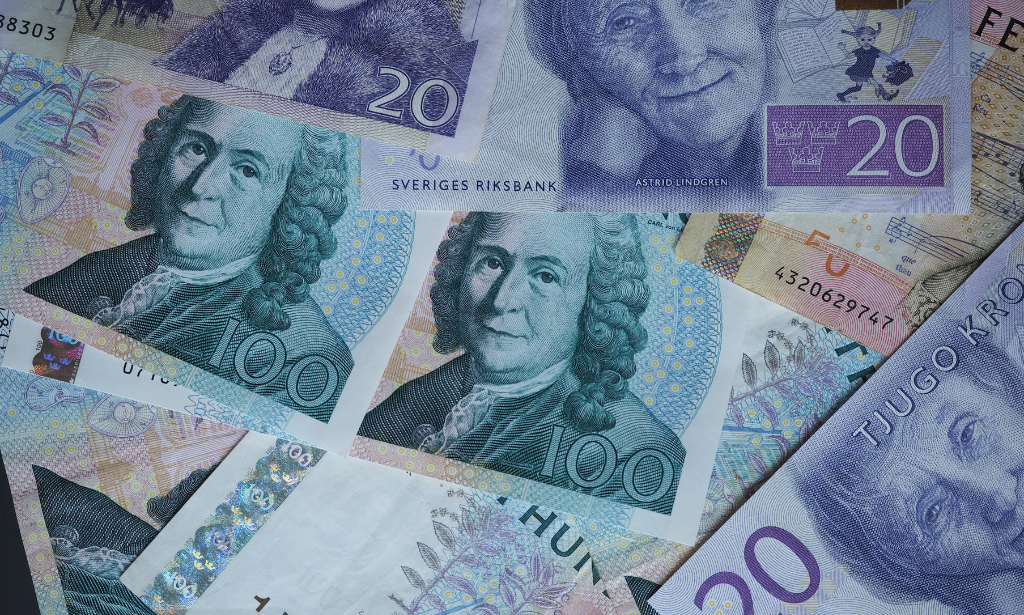The Swedish krona has fallen by more than 2% since the start of August and is now once again threatening to plumb historic time lows against the euro. These latest moves lower for the krona have been propelled once again by a nasty mix of high inflation, a weak economy, falling house prices and growing rate differentials as the Riksbank struggles to keep pace with monetary tightening elsewhere.
Unfortunately for Swedes, the prospect of a recovery does not look likely in the very near future. Notably, flash GDP figures published at the end of August look set to bring with them another set of grim news, heralding a likely recession. With that being said, we think a turn-around in the krona’s fortunes could be on the horizon. Under our current base case for the Eurozone, the ECB will bring an end of policy tightening in September, allowing rate differentials to the Riksbank to begin closing.
This should put a floor under the krona, improving the inflation outlook for Sweden, which in turn set the stage for krona recovery over the medium term.
Standout Sweden
As evidenced once again on Tuesday, Swedish inflation remains at remarkably high levels. Headline inflation is currently running at 9.3%, having failed to ease at all in the latest release. Granted, this is not the peak in price growth, which saw headline CPI print at 12.3% YoY in December 2022, but a 3% fall in the space of seven months suggests that much more pain is to come. Holding interest rates constant and stripping out energy prices fails to improve the picture much either. The CPIF measure closely watched by Riksbank policymakers declined by just 0.1pp in July to print at 8.0%. On this note, the continued sell off in the krona has made a significant contribution to the current inflationary dynamic in the Swedish economy.
Falling krona valuations are pushing up import costs, mechanically increasing the prices faced by consumers.
The Riksbank, unable to raise rates to combat this inflationary impulse, is forced to accept deeply negative real rates, in turn placing further downwards pressure on the krona. This feedback dynamic has produced high inflation and currency weakness that makes Sweden a standout amongst developed economies for all the wrong reasons.
Swedish inflation remains alarmingly strong across all measures

Breaking out of the doom loop
Unfortunately, the picture painted by economic data is likely to get a little worse before it gets better. GDP figures due on August 29th are likely to show the Swedish economy slowed sharply in Q2, with a Bloomberg survey of economists suggesting the Swedish economy will contract by 0.4% over the course of 2023. Beyond month end, however, some reason for optimism is beginning to emerge. In our view the ECB is likely to hold rates on September 14th, with policymakers having already conducted the final rate hike of this cycle in our view. In contrast, the Riksbank’s next policy meeting on 21st of September is almost certain to bring a further 25bp of policy tightening, with the potential for more in the pipeline. Under this scenario, not only would the ECB undershoot current market pricing, dragging the euro lower, but it would allow rate differentials between the eurozone and Sweden to close, further supporting SEK moving forwards.
With bad news on growth already baked in, this scenario would set the scene for a krona recovery heading into year end.
Riksbank scenario projections suggest that policy rates will need to go significantly higher the current 3.75%, especially given recent currency weakness

Risks remain skewed towards yet more downside
Whilst our August forecasts had anticipated the rise in EURSEK seen since the start of the month, the krona’s high beta to global growth conditions meant our month end forecast of 11.75 has been realised sooner than expected. This was driven in large part by a string of poor economic news out of China, where authorities look at serious risk of missing the growth target of 5% this year. We, like markets, are waiting to see fiscal support to counter this economic slowdown.
If this fails to materialise, however, then the accompanying underperformance in global economic growth is likely to continue as a drag on the krona.
More specific to Sweden though, the housing market has also been a significant concern. Having already fallen by roughly 15% peak to trough, the risk of triggering a runaway collapse in prices has already limited the Riksbank’s ability to tighten policy. Such an eventuality whilst a tail risk, would also naturally weigh on the krona if realised, albeit it seems we may now be past the worst of the declines.
Absent these factors, however, and assuming data continues to evolve as expected, we are likely close to the bottom for krona. Given this, continue to see the stage as set for a significant fall in EURSEK in the second half of the year and on into 2024.
Author:
Nick Rees, FX Market Analyst
 Login
Login
